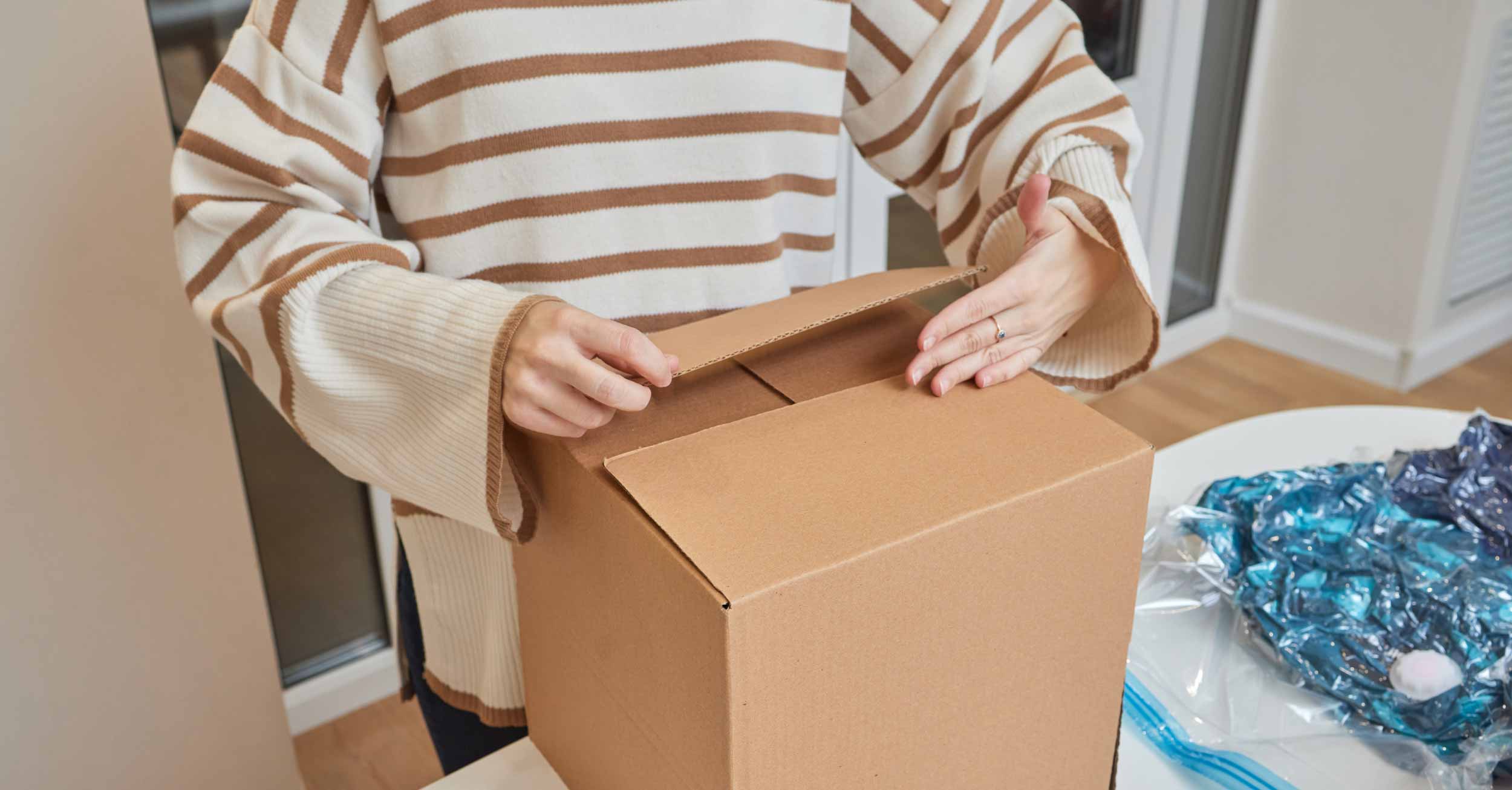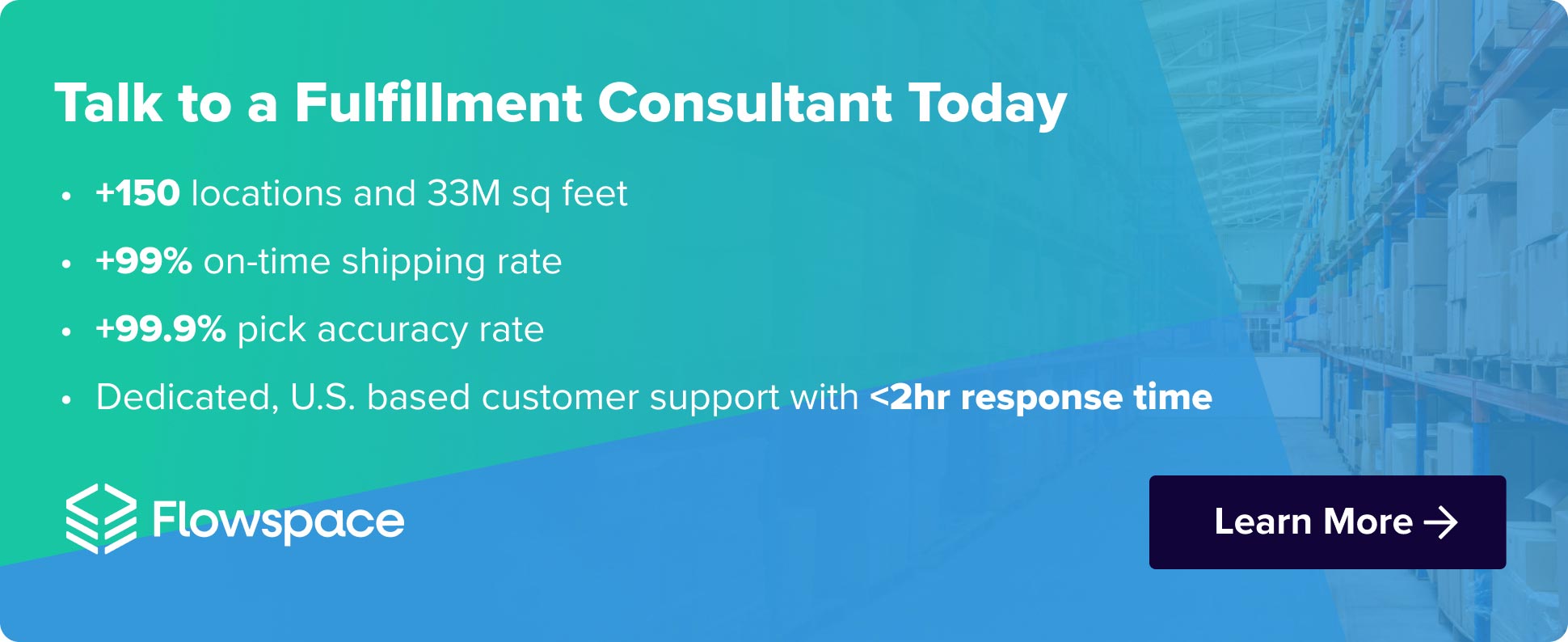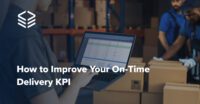
Updated Jan 17, 2024
If you’re reading an article about ecommerce logistics, it’s safe to assume you’ve made an ecommerce return. Imagine a customer orders a pair of shoes online, but when they arrive, the customer realizes they don’t fit correctly. So, they decide to return them. That decision kicks off the reverse logistics process.
Reverse logistics, also known as reverse supply chain, refers to the activities involved in handling the flow of products or materials from the customer back to the seller or manufacturer. It includes processes such as product returns, repairs, refurbishment, recycling, or disposal. Basically, it’s the opposite of regular logistics, which focuses on moving products from the seller to the customer.
While no brand wants to see their products returned, it’s a reality for all ecommerce businesses. Customers return about 17% of online orders [1], so having a plan in place for reverse logistics is critical.
Forward Logistics vs Reverse Logistics
Forward logistics operations involve the movement of goods from the manufacturer to the customer, including activities such as product development, material sourcing, manufacturing, transportation to distribution centers, and final-mile delivery to a consumer. On the other hand, reverse logistics operations refer to the movement of products and materials back into the supply chain after delivery, and it includes processes such as product returns, recalls, recycling programs, product disposal, and asset recovery.
While forward logistics focuses on the traditional flow of products to the end customer, reverse logistics or reverse supply chain deals with the movement of products in the opposite direction, from the end user back to the manufacturer or raw materials through recycling.
The Importance of Reverse Logistics in Ecommerce
Reverse logistics is important because it helps businesses manage customer returns, reduce waste, and maximize the value of returned products. It involves coordinating activities like transportation, warehousing, inspection, and product inventory management in the opposite direction of traditional logistics and the usual supply chain flow.
In essence, reverse logistics ensures that products that are no longer needed by customers are handled efficiently and sustainably. Whether it’s managing product recalls, handling defective items, or facilitating customer returns, reverse logistics plays a crucial role in maintaining customer satisfaction and minimizing the environmental impact of returned goods.
Types of Reverse Logistics
Reverse logistics is a fascinating and crucial aspect of supply chain management, often overlooked yet integral to customer satisfaction and environmental sustainability. Let’s dive into the various types of reverse logistics, each playing a unique role in the lifecycle of products.
Returns Management
The most common and perhaps the most visible type of reverse logistics is returns management. This process involves handling products that customers return for various reasons, such as dissatisfaction, defects, or simply a change of mind. Effective product return management is not just about accepting returns; it’s about creating a seamless, hassle-free experience for customers, thereby enhancing brand loyalty and reputation.
Remanufacturing and Refurbishment
Not all returns spell the end of a product’s life. Remanufacturing and refurbishment breathe new life into returned items. This process involves repairing, reconditioning, or completely overhauling a product to make it as good as new. It’s a win-win, reducing waste and recapturing value from returned products.
Packaging Management
In the world of reverse logistics, packaging management is a hidden gem. It focuses on reusing and recycling packaging materials, significantly cutting down waste and costs. By efficiently managing packaging, companies not only save money but also contribute to environmental sustainability.
Unsold Goods
Retailers and manufacturers often face the challenge of dealing with unsold goods and products. Reverse logistics comes into play here, managing the return of these items from retailers or warehouses back to the manufacturers. This process is crucial for inventory management and reducing losses due to overstocking or obsolescence.
End-of-Life Product Management
As products reach the end of their lifecycle, responsible disposal becomes essential. End-of-life product management involves returning products for proper disposal or recycling, ensuring environmental compliance and sustainability.
Delivery Failure
A less talked about but equally important aspect is managing delivery failures. When products fail to reach their intended destination, optimized reverse logistics ensures they are either correctly redelivered or returned to the sender, minimizing losses and inefficiencies in the supply chain.
Rental and Leasing Returns
In the rental and leasing business, reverse logistics manages the return of products at the end of their rental or lease term. This process is crucial for inventory control, refurbishment, and redeployment of these assets.
Repair and Maintenance
Lastly, repair and maintenance are vital components, especially in industries dealing with electronics and machinery. This involves returning products for necessary repairs, warranty work, or regular maintenance, ensuring customer satisfaction and product longevity.
Each type of reverse logistics operation plays a pivotal role in the supply chain, contributing to cost reduction, customer satisfaction, and environmental sustainability. By understanding and effectively managing these processes, businesses can turn potential losses into opportunities for growth and customer loyalty.
The Reverse Logistics Process
Let’s break down the reverse logistics process into simple steps.
Step 1: Product Returns Initiation
When a customer wants to return a product, they may reach out via email, phone, or through an online portal. Make sure you have clear return policies and guidelines in place, so you can efficiently guide customers through the process. Collect all the necessary information from the customer, such as order details, reason for return, and any specific instructions. It’s during this step that you will give the customer instructions for shipping the item back, if necessary.
Step 2: Inspection and Sorting
Once you receive the returned product, it’s time to inspect and sort it. Check the item’s condition to determine if it can be resold or if it needs further attention. Look for damages, missing parts, or signs of use. Depending on your return policies, you may separate the returned items into different categories based on their condition. This sorting step will help you decide the appropriate next actions for each returned item.
Step 3: Processing and Disposition
After inspection and sorting, it’s time to process the returned products. If an item is in good condition and can be resold, you can reintegrate it into your regular inventory. Make sure to properly clean and package the item before returning it to stock. For items that need repairs or refurbishment, you can send them to the appropriate department or partner with a service provider who specializes in these tasks. If a product is beyond repair or not suitable for resale, you can consider environmentally friendly disposal or recycling options.
Step 4: Reintegration or Disposal
In the final step, you either reintegrate the processed items back into your inventory or dispose of them responsibly. Reintegrate the repaired or refurbished items into your stock, ensuring they are properly labeled and accounted for. For products that are not suitable for resale, explore recycling programs or collaborate with organizations that can carry out proper disposal of the materials. By considering sustainable disposal methods, you can contribute to environmental conservation efforts.
Key Components of an Effective Reverse Logistics System
By incorporating these key components into a reverse logistics system, brands can streamline their operations, enhance customer satisfaction, and reduce costs.
Centralized Returns Management
Having a centralized returns management system is crucial for efficiently handling product returns. This means establishing a dedicated department or team that specializes in managing returns. They will be responsible for receiving and processing return requests, coordinating inspections, determining the appropriate actions for returned items, and communicating with customers. A centralized system ensures consistency, speed, and accuracy in handling returns.
Advanced Technology Integration
Integrating advanced technology into your reverse logistics system can greatly enhance efficiency and accuracy. This includes using a robust software or system to track and manage return requests, automate processes, and generate reports. Implementing barcode scanning or RFID technology can help streamline the inspection and sorting process.
Efficient Inventory Management
Efficient inventory management is essential for effective reverse logistics. It involves maintaining a clear and organized system for tracking returned items, ensuring they are properly accounted for in your inventory. Implementing real-time inventory tracking systems or using dedicated software can help manage the flow of returned products, identify available stock for reintegration, and prevent stock outs or overstocks. Learn more about how to avoid stockouts and overstocking today.
Eco-Friendly Disposal Options
While it’s essential to have processes in place for disposing of items that cannot be resold or repaired, customers are becoming more interested in sustainable and eco-friendly disposal options. Collaborate with recycling partners or organizations that specialize in environmentally friendly disposal methods.
The Benefits of Reverse Logistics for Ecommerce Businesses
From improving customer satisfaction to enhancing brand reputation, reducing costs, and promoting sustainability, reverse logistics can be a game-changer for any domestic or cross-border ecommerce business.
Improved Customer Satisfaction
An efficient reverse logistics process directly contributes to improved customer satisfaction, facilitating smooth ecommerce fulfillment. By providing hassle-free returns and exchanges, you show your customers that you value the customer experience even after the sale. Simplifying the return process, offering flexible return options, and providing clear communication helps build trust and loyalty. While no one likes returning purchases, a positive return experience can turn a dissatisfied customer into a loyal brand advocate, boosting customer retention and customer loyalty.
Enhanced Brand Reputation
When customers have a positive experience with the returns process, they are more likely to recommend your business to others. Word-of-mouth referrals and positive online reviews can significantly impact your brand’s image. By showcasing your commitment to customer service and reliability, you differentiate yourself from competitors and build a positive brand reputation.
Reduced Costs and Increased Profitability
By streamlining return processes, you minimize handling and restocking costs. Efficient inventory management helps you identify products that can be resold or refurbished, reducing waste and preventing overstocking. Additionally, analyzing return data can provide valuable insights into product quality, enabling you to make informed decisions that optimize your supply chain and boost profitability.
Greater Sustainability
Reverse logistics plays a vital role in promoting sustainability. It allows you to recover value from returned products instead of disposing of them. By repairing, refurbishing, or reselling items, you reduce waste and extend product life cycles. Collaborating with recycling partners for eco-friendly disposal options further contributes to environmental sustainability.
Challenges in Implementing Reverse Logistics
From regulatory compliance and complex supply chain and reverse logistics management to accurate demand forecasting and managing customer behavior, understanding and addressing these reverse logistics challenges is key to achieving success.
Regulatory Compliance
Navigating regulatory requirements is a significant challenge in reverse logistics. Each country or region may have specific laws and regulations concerning product returns, disposal, and recycling. Ensuring compliance with these regulations can be time-consuming and complex. It’s essential to stay updated on relevant regulations and work closely with legal advisors to establish processes that meet the necessary compliance standards.
Complex Supply Chain Management
Reverse logistics involves managing multiple stakeholders, including suppliers, manufacturers, transportation providers, and repair or refurbishment partners. Coordinating the reverse flow of goods and coordinating these various parties can be challenging. Establishing clear communication channels, leveraging technology for real-time tracking, and collaborating closely with partners are essential for streamlining the supply chain and ensuring efficient reverse logistics operations.
For a complete understanding, businesses need to monitor both inbound and outbound logistics. Inbound logistics involves overseeing the arrival of raw materials or products from suppliers to the manufacturing site. On the other hand, outbound logistics deals with the distribution of finished products to the final consumer. These logistics are typically assessed from the viewpoint of the manufacturer. However, reverse logistics is a versatile component, applicable at various stages throughout the supply chain.
Accurate Forecasting and Planning
Reverse logistics often involves dealing with unpredictable volumes and products in different conditions—from immaculate to damaged. Accurate forecasting and planning become crucial for managing inventory, allocating resources, and optimizing processes. Collecting and analyzing data on return patterns, customer feedback, and product quality can help improve forecasting accuracy. Implementing robust inventory management systems and leveraging predictive analytics can aid in planning and aligning resources accordingly.
Customer Behavior and Expectations
Customers may have different return preferences, such as flexible return policies, easy return processes, or options for exchange or store credit. Meeting these expectations requires clear communication, user-friendly return interfaces, and providing convenient return options. Analyzing customer feedback and incorporating their preferences into the reverse logistics strategy can help enhance customer satisfaction.
How Flowspace Can Help with Your Reverse Logistics Needs
Reverse logistics can be a complex and challenging aspect of ecommerce operations. However, with the right partner, it doesn’t have to be. Flowspace offers the software, services, and interconnected partner ecosystem you need to manage your reverse logistics process.
Customizable Reverse Logistics Solutions
Whether you need assistance with product returns, repairs, refurbishment, or disposal, Flowspace can help you determine the reverse logistics plan that aligns with your business goals.
State-of-the-Art Warehouse and Fulfillment Services
Flowspace has state-of-the-art fulfillment centers strategically located across the country. These facilities are equipped to handle all aspects of reverse logistics. From receiving and inspecting returned items to sorting, storing, and processing them, Flowspace and its partners ensure your products are handled with care and accuracy, effectively improving your inventory management KPIs.
Seamless Technology Integration
Flowspace’s OmniFlow Visibility Suite provides real-time visibility into inventory, order status, and return management. With Flowspace’s technology integration, you can easily monitor the progress of returned items, access insightful analytics, and stay informed every step of the way.
Expertise in Ecommerce Logistics
Flowspace specializes in ecommerce logistics and has extensive experience in handling reverse logistics for online businesses.
Get in touch today to learn how to improve reverse logistics, and how Flowspace can streamline your reverse logistics operations and enhance customer satisfaction!
Sources:
[1] Cox, Ashley. 2023. “Amazon Will Charge Customers a Fee for Some UPS Returns – CW Tampa.” Www.cbsnews.com. April 12, 2023. https://www.cbsnews.com/tampa/news/amazon-will-charge-customers-a-fee-for-some-ups-returns/.







